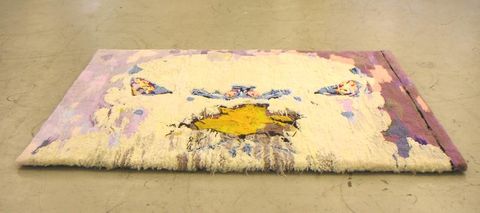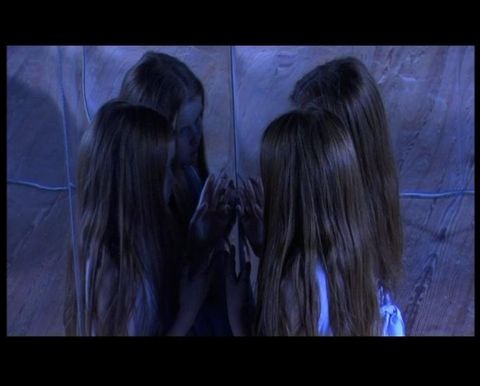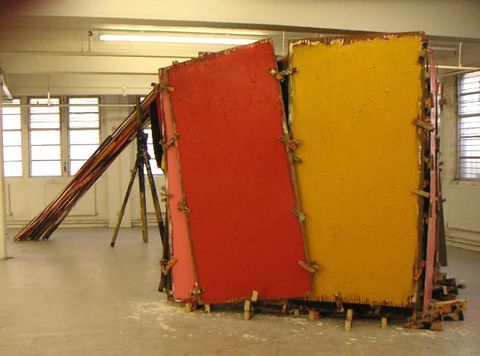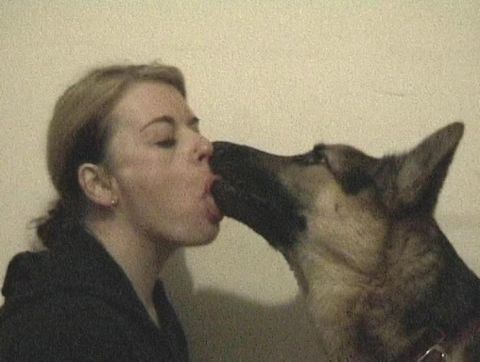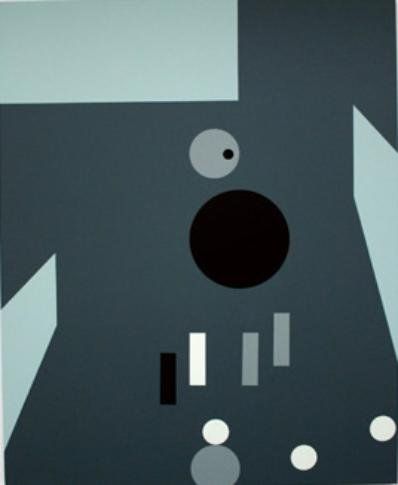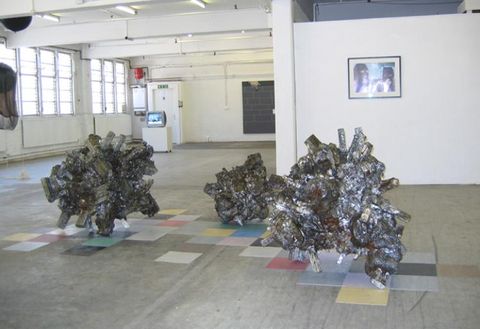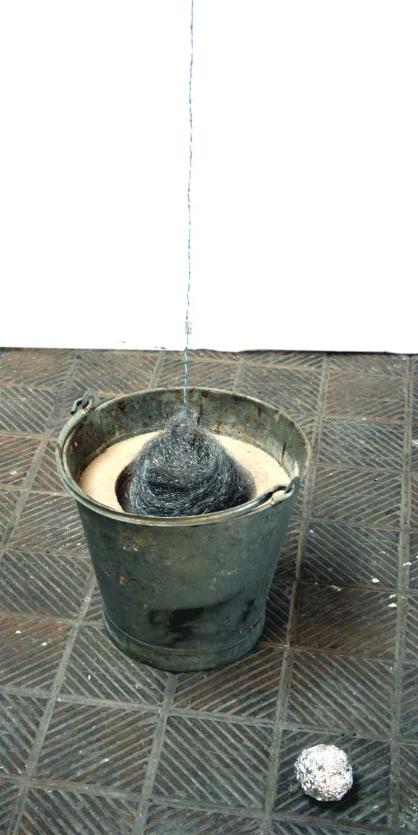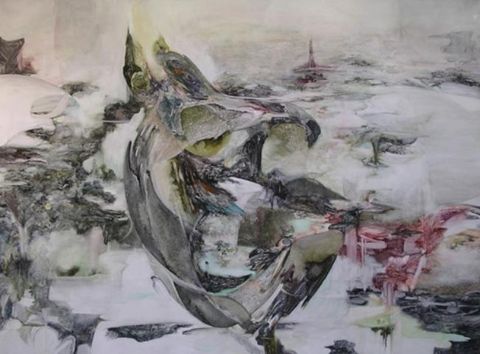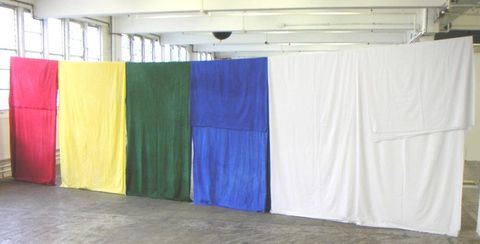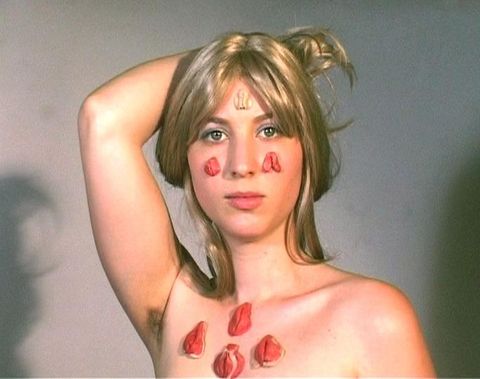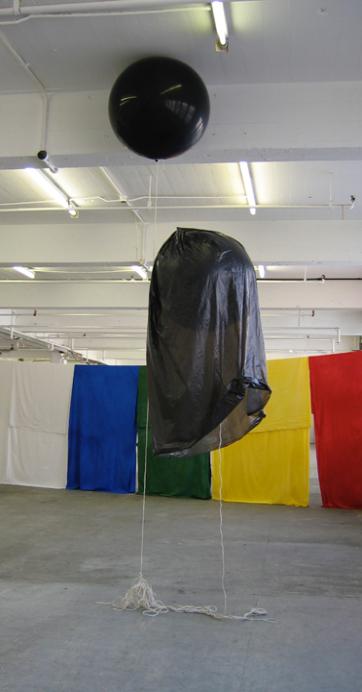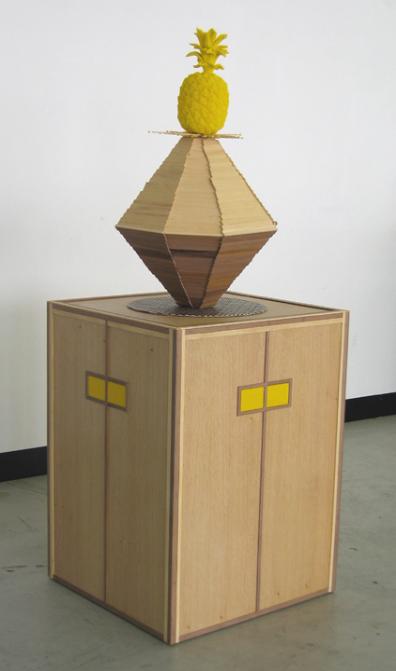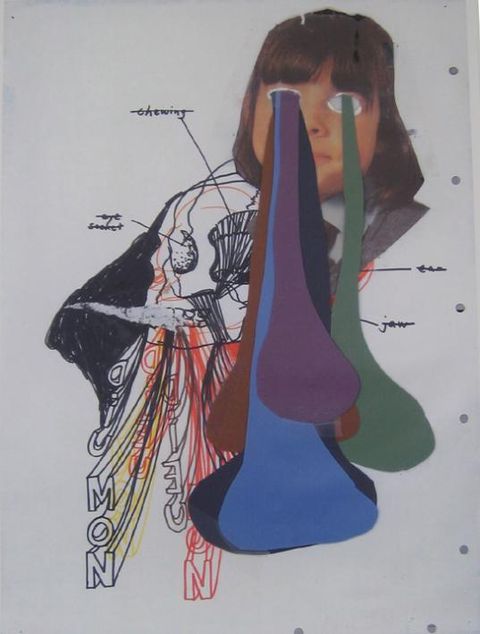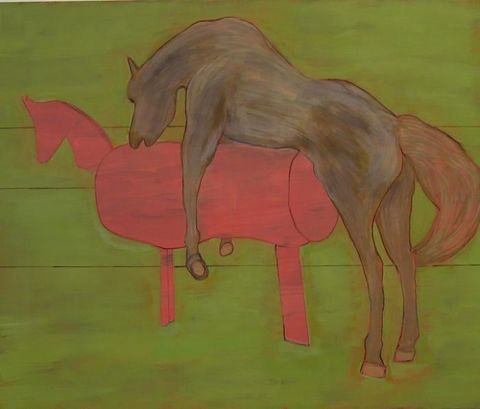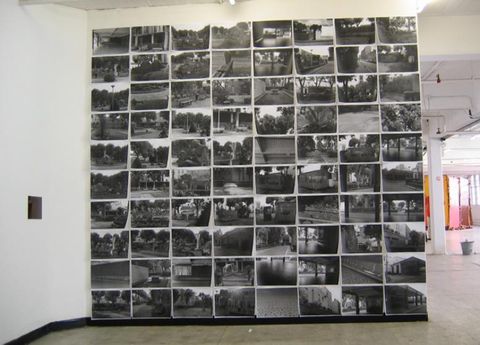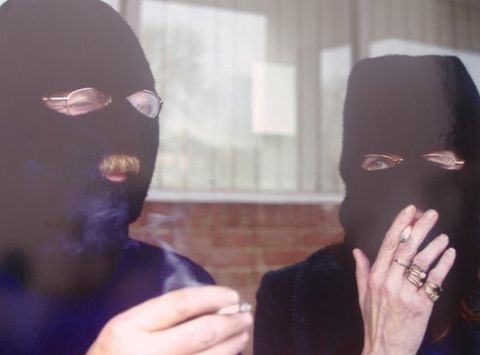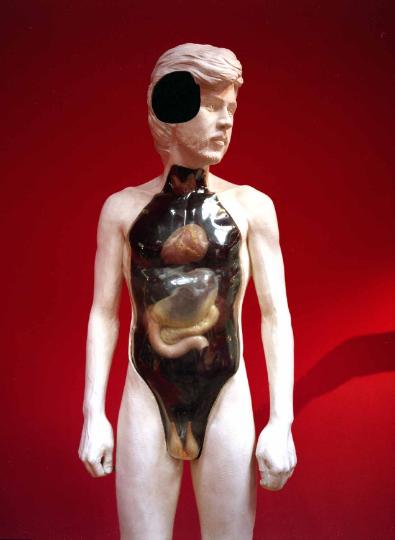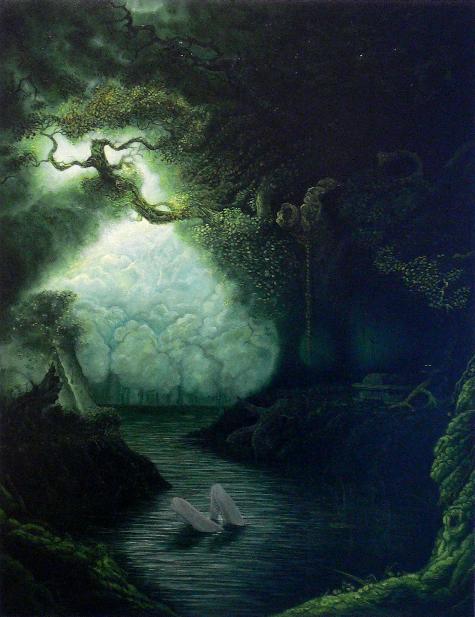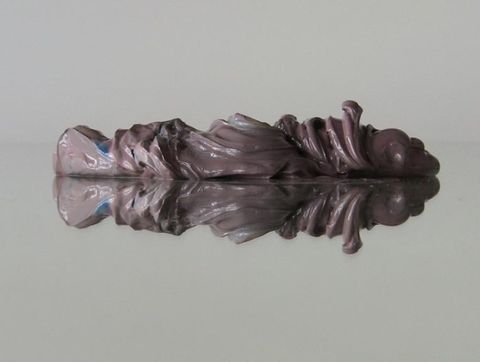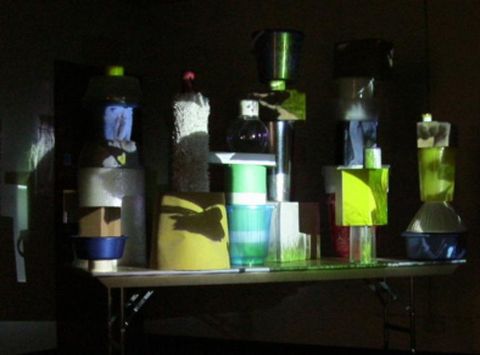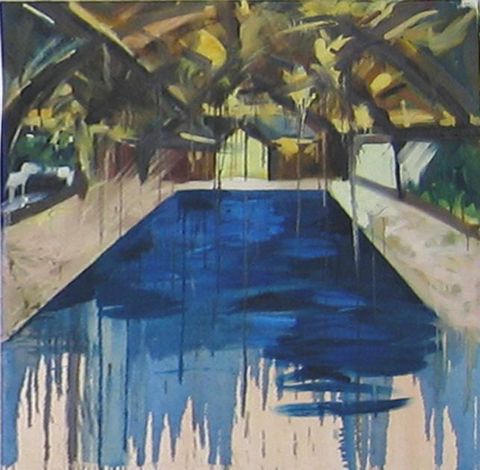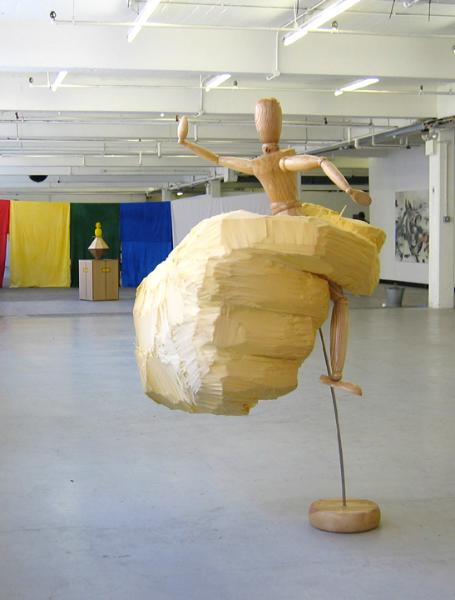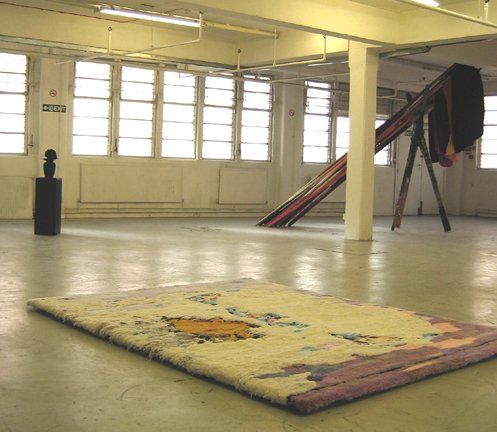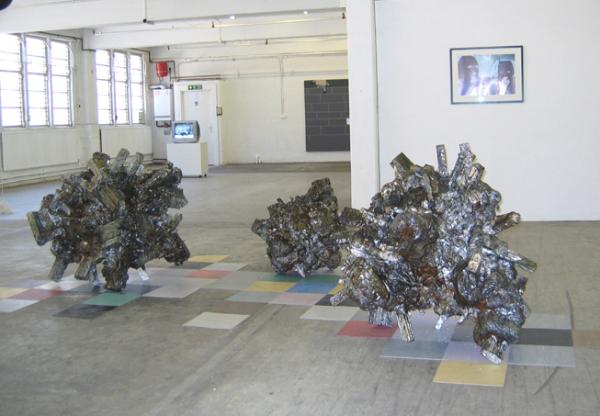CAROLINE ACHAINTRE - ALICE ANDERSON - PHYLLIDA BARLOW - ANGELA BARTRAM - JUAN BOLIVAR
GILES CORBY - RICHARD DUCKER - NADINE FEINSON - PETER FILLINGHAM - ORIANA FOX - MAX HYMES
PETER LAMB - RICHARD LIVINGSTON - CHARLOTTE MOTH - GILES PERRY - HELENA POMFORD - JAMIE ROBINSON
JOHN STARK - CHRISTOPHER STEVENS - NOBUKO TSUCHIYA - LAURA WHITE - JO WILMOT - NEIL ZAKIEWICZ
curated by Richard Livingston and Laura White
In the fairy tale of Beauty and the Beast an opposition is set up between ideas of beauty and bestiality, between attraction and repulsion, through the roles of humans and animals. But are these apparent opposites of idealistic beauty and repelling ugliness, truly polar or rather ever-changing and interchanging variables, undergoing metamorphosis? If so, this would shift the responsibility onto the viewers to make up their own mind, to see beneath the surface of the visual and skin deep.
The viewer may choose not to compare extreme opposites but to negotiate the movement and flow between the two, weaving an individual path between that which is beastly, dysfunctional and dangerous and that which is beautiful, seductive and enticing.
The journey is by no means a linear one, but creates tension through opinion and association, between visceral response and rational judgement. (The young body becomes the rotting body and the predator becomes the prey.) Each state of beauty and beast contains the other, defines the other.
This tale also reflects the complex relations between humans and animals and the confusion of the human and animal perspective. The idea of the beast is not just related to animals, but in human terms, describes the very unpleasant and disagreeable. The beast can be seen as a metaphor for things that are uncivilised or uncomfortable. Actions deemed 'inhuman,' monstrous or transgressive, are seen as simulating the behaviour of an animal or beast.
Both between and within individual works, there is a push and pull between fantasy and reality, desire and aversion to raise questions regarding the relationship between beauty and beast.
exhibition dates: 8 September - 1 October 2006 opening hours: Friday, Saturday & Sunday 1-6 pm
CAROLINE ACHAINTRE
Caroline Achaintre's work has been described as 'portraiture of near monsters’, as a result of her development of the twisted and glamourised imagery from horror films and heavy metal graphics. In the last three years, her practice has focused upon the production of large-scale, hand-tufted rugs, delicate digital and watercolour drawings and most recently the introduction of woodcuts. Since graduating from Goldsmiths MA Fine Art in 2003, Caroline Achaintre's work has been included in a number of group shows including Until it makes sense, Gallery Seventeen, London and Thaddeus Ropac, Paris Contropop Vamiali's, Athens and The Unhomely, Kettles Yard, Cambridge. She has also made solo shows for spaces including The Showroom, Lawrence O'Hana, London and Mirko Mayer Galerie, Cologne.
ALICE ANDERSON
Alice Anderson’s little stories take shape in video or in space.
Her practice is to create a perpetual novel. Each of its episodes is a personal adventure in itself, both poetic and absurd.
Every chapter of her novel explores the imaginary world of childhood, and can be read as a Freudian fable.
PHYLLIDA BARLOW
For the last four decades, Phyllida Barlow's work has consisted predominantly of large three-dimensional installations in which the use of space – and our relationship to it – plays an important role. The identity of the materials she uses (wood, cloth, plaster, paper and house paint) remains visible in the completed work. Structures and forms, both rudimentary in construction and densely built, explore ideas of mass and volume. Containing references to architecture, such as staircases, platforms, walls and barriers her work provokes recognition and narratives but also demands that they be read as abstract form. Phyllida Barlow’s sculptural installations function somewhere between the autonomous and the associative. By shifting scale and composition her structures and objects play with the familiar and seem to take command of a space whilst appearing temporary and incomplete. Her work references painterly abstraction both through the deployment of colour and the materials she uses. Barlow’s daubed application of paint amplifies the use of pattern and repetition in her constructions. Scale and materials are used to bring about a sense of place where pieces are to be walked around and through. The built structures dwell in the space implying some kind of contingent purpose.
ANGELA BARTRAM
Canine and human exist and relate through socially inscribed patterns to do with correct behavior. Reservations regarding contamination, pollution, and breed anxiety can often become established when actions are performed between companion species. Working with a German Shepherd dog, symbolic boundaries and etiquette can be dissolved through how the human and non-human interact. And with the added focus of the mouth, ‘Fur Kiss’ aims to deal with the potential disruption of the polite and the decent that this exchange may bring.
JUAN BOLIVAR
Since graduating in 2003 Juan Bolivar has curated several exhibitions (www.trailerart.net), including TRAILER's tenth show,
'Yabadabadoo' at Cell Project Space, London and 'Eau Savage' at the Lucy Mackintosh Gallery in Lausanne, Switzerland. (www.lucymackintosh.ch) Bolivar's paintings deal with formalism and abstraction as a language reconfigured into fantasy, tragi-comical visions.
GILES CORBY
When asked to comment or explain the basis for my work, there is never one single concept or philosophy but rather lots of different elements which make up my practice. For example scenes of desolated cities from films like Planet of the apes, Logan’s run, as well as the cinematography of Fritz Lang most notably metropolis. “An Implied History” In one way or other this obsession has fed the majority of my work, deliberately post apocalyptic, not quite the statue of liberty, but with a similar ethos.
RICHARD DUCKER
Richard Ducker covers every-day objects in concrete. Narratives are set up through the introduction of found materials within the work, and the way the work is presented. As personal associations are projected onto these standardised, mass-produced objects, they became alive, as sites of symbolic exchange. Out of this representation of obsolescence and nostalgia, he uses the language of the monumental to create artworks where memory and the present collide. The works coalesces around certain themes of loss and a domestic disquiet. There is often a sense of displacement, narratives are either imagined or remembered, and the body remains an absent presence.
NADINE FEINSON
There is an area of mediaeval thought called Teratology which concerns the study of monsters. The monster being seen as multiple and paradoxical: it is what it is not. It sits on the edge of what can logically be known and understood. The monster becomes a way of exploring the systems and processes which operate on matter and create form in the natural world, particularly within the states of opposition and simultaneity. These are spaces where opposing elements can inhabit the same space, fused and yet separate, formed and yet formless.
ORIANA FOX
Ventriloquism, lip-synching, and appropriation all play subversive roles in the post- feminist cocktail of Oriana Fox's videography. Tackling television and film's role as a myth-maker she finds beauty in her own perceived reflection in popular culture. But unlike Narcissus, her mini-movies beget sequels rather than tragic ends. The result is a subdued laugh track that leaves the viewer numb with joy.
AMY HURST
Archetypal objects and the generic associations of such things are a key area of interest for Amy Hurst. They are often welcomed as part of sculptures that have functioned with transient movement and can resonate as systems in themselves. Paradoxes, play and the poetic are also important elements that have been present – sometimes expressed through ridiculousness, or a sense of childishness in the work. As a result of materialistic associations these odd and beguiling sculptural objects are volatile, yet manage to hold their own space. There is some sort of play-off in these works that veers between the pathetic and something more claustrophobic.
MAX HYMES
Much of Max Hymes's work suggests a use but this is ritualistic or shamanistic rather than domestic. A mixture of materials and painstaking precision decoration implies an obsessive glorification of that which the object represents or celebrates. Familiar motifs taken from nature seek to consider our understanding of how we represent other living things in relation to ourselves.
RICHARD LIVINGSTON
Richard Livingston makes paintings of pleasure and tragedy using as source material images from archives and the media, which are selected for their emotional resonance. All references to a particular time or place are erased to isolate and accentuate the posture, gesture or fragment. By blurring an anguished or sensual moment and erasing its specificity, another dimension such as colour or tenderness may be revealed, presenting an oscillation between suffering and pleasure, coexistence and separation, remembering and forgetting. Many of the current works are exploring human emotions, perceived through images of animals - in the laboratory, the home or wildlife films. We use animal metaphors to picture desire, affection, cruelty and the movement between visceral animal and rational human.
GILES PERRY
Giles Perry was born in London. He studied BA Fine Art at Central St. Martins, and completed an MA at Goldsmiths College in 2004. He has shown in Bloomberg New Contemporaries 2005, the 2004 Yugoslav Biennial of Young Artists, and 'Video London', a showcase of UK video work curated by Keith Patrick & Jen Thatcher, at LOOP 05 in Barcelona. His work 'Duende' was commissioned to appear in the summer 2003 edition of the art journal ‘UNTITLED.’ He lives and works in London.
JAMIE ROBINSON
From a series of works in hospitals and science sections of museums begun in 2000. I work on a number of series over a number of years simultaneously. I like to get close using wide lenses and be involved with the subjects. Work has been published in Dazed and Confused, Icon, Miser and Now, The Independent and other publications. Work in PYMCA and Getty. First book Aishiteru, I Love you published my Imprint 2001. Past shows have included a one man show at 1000,000mph in March 2006, Apt Draschan Vienna 2005, Erotic Award finalist Trolley gallery London September 2005, Prussian Blue, Carter Presents 2004, and Domestocity Cell Projects 2003.
JOHN STARK
I am interested in the construction of things, film, literature, painting… For example; during the filming of Rosemary’s Baby Mia Farrow had a nervous breakdown. She then turned up on set one day with her hair cut short and the directors had to somehow incorporate this into the film only adding to its surprising narrative. Recent paintings are made to order from an imaginary patron, Mr Karts. Graduated from Royal Academy Schools 2004, Artist in Residence at Loughborough University 2004/05. Recent shows include ‘New Figurative Realism’ (Clapham art gallery), ‘Eau Sauvage’ (Lucy Macintosh, Switzerland).
CHRISTOPHER STEVENS
Christopher Stevens has shown widely in the UK and overseas, winning prizes in competitions including the John Moores and Nat West exhibitions. The animation presented in this exhibition represents a new departure for him as an artist, his practice until this year situated solely within painting. Another in the series: Café Delight was recently screened at the Blink Animation showcase at Gasworks. His next solo exhibition will be at Permanent Gallery in Brighton in November of this year. Christopher’s work is represented by the Andrew Mummery Gallery in London.
NOBUKO TSUCHIYA
‘Not everything is as it appears in my work, not everything is done on purpose. My decisions are made by using what you could call a different form of thinking, and are made to operate between harmony and discord, control and lack of it. I always try to develop the conversation between the thinks in my work and myself. Maybe this sounds idiotic, but it is my honest feeling' 12New British talent, Picture perfect, Adrian Searle, 30.11.04
*All work by Nobuko Tsuchiya
appears Courtesy of Anthony Reynolds Gallery
LAURA WHITE
Laura White is interested in the way we read and view nature. How nature through the frameworks we set up can seduce us and provide us with unthreatening pleasure and entertainment, like visiting an aquarium, a zoo, or walking through urban parkland. This process of visual engagement, often in the work projected as a moving image is shattered by the viewers acknowledgement of the positioning, exaggeration and awkward arrangements of the image, or the presence of objects in the space, which slowly reveal a less entertaining view of nature, one that exposes its extreme manipulation and often threatening instability, whether that be through human contamination, misrepresentation, dislocation, or nature’s ability without any human intervention to destroy.
JO WILMOT
Jo Wilmot is absorbed by luxury and degradation. Through dripping, melting paint her work depicts the domestic interiors and gardens of the wealthy. Her use of paint makes these landscapes and interiors seem over-ripe, claustrophobic and nauseating. Wilmot graduated from Goldsmiths MA 2005. She has recently exhibited in 'Fuck Art Lets Paint' at Transition, and 'Concrete Allotment' at temporarycontemporary.
NEIL ZAKIEWICZ
Neil Zakiewicz carves foam and wood, hacking the shapes of oversized hands, animals and superheroes. These are monuments for a generation which no longer believes in monumental gestures. His recent sculpture “Pencil Holder” (2005) featured a giant Socialist Realist-style raised fist clutching a set of five brightly coloured pencils. Formerly a member of the curatorial group Unit, he completed an MFA at Goldsmiths in 2003 and has exhibited widely in the UK and abroad, including a solo exhibition in January at Bearspace
